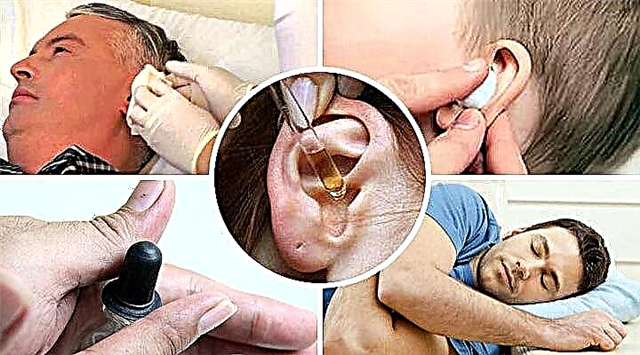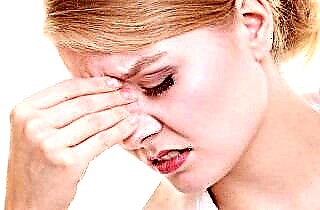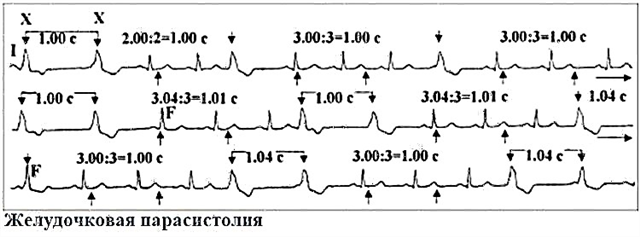What to put into the ear in case of pain? Almost every person asked himself this question. Currently, getting medicines is not a problem - pharmacies offer a wide range of ear drops - pain relievers, antimicrobials, anti-inflammatory, etc. The most obvious solution for many is to purchase pain relieving ear drops. However, this option, with its deceptive logic, is absolutely wrong and dangerous. Ear pain does not appear from scratch - it is a symptom of diseases of the ear, and in some cases of other organs - sinuses, teeth, etc. The choice of the drug depends primarily on the cause of the pain.
In this article, we will look at the most common causes of ear pain. We will tell you what to put in your ear if it hurts due to otitis media, furunculosis and other disorders.
It is not necessary to try to independently understand the diseases accompanied by ear pain, and the drugs used in the treatment of each disease - it is better to consult a specialist.
The ENT will find out the causes of your illness and draw up a complete treatment plan. Please note that effective therapy includes not only ear drops, but also systemic drugs - antibiotics, antiviral, antipyretic, etc., depending on the diagnosis.
Causes of ear pain

What to drip into the ear if it hurts? It all depends on the causes of the disease. The most common causes of ear discomfort are:
- Otitis media - inflammation of the middle ear - can be acute catarrhal (associated with edema), acute purulent (accompanied by the release of purulent masses from the ear canal) and chronic. Pain with otitis media is constant, periodically increasing, throbbing or aching. Hearing may be temporarily impaired. For acute otitis media, an increase in body temperature is characteristic (in children, indicators often reach 39 C). With otitis media, ear drops with an antibacterial effect are shown - "Normax", "Otofa", etc. In severe cases, hormonal drops can be prescribed - they quickly relieve inflammation and pain. In addition, systemic therapy aimed at eliminating the causes of the disease is mandatory.
- "Swimmer's disease" - edema and itching in the auricle caused by frequent ingress of water and maceration of the skin. The ears are very sensitive to water ingress, especially cold, polluted or chlorinated water. Swimmer's disease often leads to otitis externa. For prevention, swimmers and divers are advised to regularly wash their ears with boric or furacilin alcohol.
- Otitis externa - inflammation of the skin of the auricle and ear canal. With otitis externa, the pain is less severe than with average. Unpleasant sensations intensify when moving the jaw - talking,
 yawning, chewing, etc. With otitis externa, in most cases, treatment with topical preparations (in the form of antimicrobial drops and ointments) is sufficient.
yawning, chewing, etc. With otitis externa, in most cases, treatment with topical preparations (in the form of antimicrobial drops and ointments) is sufficient. - Damage to the tympanic membrane (as a result of hygienic manipulations, a blow to the head, foreign objects getting into the ear, rupture under the pressure of pus in case of otitis media). Perforation of the membrane impairs hearing, leading to tinnitus. The first days after injury, the ear hurts, then the pain subsides.
If the eardrum is damaged, do not bury the ear. Using most ear drops in this case can lead to infection, hearing loss and total hearing loss.
First aid for damage to the tympanic membrane is to apply a few drops of boric alcohol to the gauze turunda and put into the ear canal. The patient should immediately see a doctor. If otitis media is diagnosed against the background of perforation of the tympanic membrane, only approved drops are used (for example, "Otofa", "Tsipromed"). They are introduced with the help of turunda - first a gauze swab is inserted into the ear, then the drug is dripped onto it. The main focus is on systemic drugs, primarily antibiotics.
- Furunculosis is an inflammation of the hair follicles of the skin of the ear canal. The pain with furunculosis is very strong, aggravated by movements of the jaw, turning the head, swallowing. When examining the ear canal, you can see a furuncle - it is a swollen, reddened area of the skin, often with a purulent-necrotic head.
You cannot open the boil yourself. If necessary, a doctor will do this (with the use of anesthesia and antiseptics).
If the disease is diagnosed at an early stage, it is enough to use local therapy - rubbing with boric and furacilin alcohol, instilling drops with an antibiotic, inserting an antimicrobial ointment (for example, ichthyol ointment).
Non-obvious reasons
Ear pain does not always indicate a pathology of the hearing organs.
So, some diseases are accompanied by pain that radiates to the ear. In this case, the sensations resemble otitis media and other ear diseases. This can be observed with:
- caries, inflammation of the dental nerves and other dental diseases;
- inflammation of the tonsils (tonsillitis);
- sinusitis;
- laryngitis (inflammation of the larynx);
- neuritis of the cranial nerves (glossopharyngeal, trigeminal, vagus);
- inflammation of the mandibular joints;
- parotid lymphadenitis - inflammation of the lymph nodes;
- inflammation of the parotid salivary glands, including those caused by mumps.
Thus, the patient is far from always able to independently determine that the pain is caused by an ear disease. Burying in this case will not bring the desired result. In addition, the elimination of symptoms (pain relief) delays the visit to the doctor and contributes to the progression of the disease.
Types of ear drops
There are 3 main groups of drugs for the ears in the form of drops:
- antimicrobial - antibacterial and antimycotic;
- anti-inflammatory - non-hormonal and steroid;
- combined - combining antibiotics and glucocorticosteroids.
Antimicrobial drugs affect infection, the most common cause of otitis media and otitis externa. Most of them contain antibiotics. At the same time, they are absorbed into the blood in a minimal amount, due to which the negative effect of antibiotics on the intestines and liver is significantly reduced. The drug "Otofa" is a strong antimicrobial agent, effective against staphylococcus, streptococcus and other pathogens. The drug is instilled into the ear canal and left for several minutes. The remains of the drug are removed with a cotton swab after a few minutes. Drops "Anauran", in addition to antibiotics, contain lidocaine - a local anesthetic. If you do not know how to instill an ear with otitis media accompanied by severe pain, pay attention to this drug.
Most of them contain antibiotics. At the same time, they are absorbed into the blood in a minimal amount, due to which the negative effect of antibiotics on the intestines and liver is significantly reduced. The drug "Otofa" is a strong antimicrobial agent, effective against staphylococcus, streptococcus and other pathogens. The drug is instilled into the ear canal and left for several minutes. The remains of the drug are removed with a cotton swab after a few minutes. Drops "Anauran", in addition to antibiotics, contain lidocaine - a local anesthetic. If you do not know how to instill an ear with otitis media accompanied by severe pain, pay attention to this drug.
Anti-inflammatory drugs reduce pain, relieve swelling, due to which the patient's well-being quickly improves. Moreover, they do not affect infectious agents, which must be taken into account when choosing a drug for otitis media. For example, Otipax quickly relieves pain and reduces inflammation, but this is not enough for otitis media. It is necessary to supplement the treatment with antibiotics, for example in the form of tablets. Otipax is a non-hormonal agent with a minimum of contraindications.
As for steoid ear drops, they have proven to be effective anti-inflammatories. For example, Otinum drops are used for acute inflammation of the middle and outer ear.Otinum is prescribed only after examining the tympanic membrane - the presence of perforations is a contraindication to this drug. Also, it is not used in the treatment of children under 6 years old, pregnant and lactating women.
Combined drugs have a comprehensive effect on the disease - they suppress inflammation, destroy infection, reduce pain and itching. These include "Sofradeks", "Garazon". Another effective remedy is Candibiotic. It is prescribed if there is a suspicion of the fungal nature of the disease. It contains antifungal, antibacterial, anti-inflammatory and analgesic components. Due to the content of glucocorticosteroids, they are contraindicated in pregnant and lactating women, as well as in children under 6 years of age.
How to bury your ears correctly?
We found out what to drop into the ear for pain of various etiologies. But how do you do it right? Follow the guidelines below:
- Use a cotton ball or gauze pad soaked in hydrogen peroxide to remove excess earwax from your ear canal. Do not use ear sticks or try to penetrate your ear as deeply as possible.
- Warm the drug by holding the bottle or pipette in your palms for a few minutes.
- The patient lies on his side, disturbing the ear up.
- The patient's auricle is pulled back and down - thus the ear canal is straightened.
 The right amount of medicine is dripped into the ear canal. For better distribution of the drug, the auricle and tragus are lightly massaged. After using some drops, the ear canal should be covered with a cotton swab.
The right amount of medicine is dripped into the ear canal. For better distribution of the drug, the auricle and tragus are lightly massaged. After using some drops, the ear canal should be covered with a cotton swab. - The procedure is repeated for the second ear (if necessary).
- If the eardrum is damaged, instillation is carried out through a gauze turunda. First, it is inserted into the ear canal, and only then the medicine is dripped.
These instructions are indicative only. Follow the recommendations of your doctor. Be sure to read the official manufacturer's instructions, which are attached to each drug.

 yawning, chewing, etc. With otitis externa, in most cases, treatment with topical preparations (in the form of antimicrobial drops and ointments) is sufficient.
yawning, chewing, etc. With otitis externa, in most cases, treatment with topical preparations (in the form of antimicrobial drops and ointments) is sufficient. The right amount of medicine is dripped into the ear canal. For better distribution of the drug, the auricle and tragus are lightly massaged. After using some drops, the ear canal should be covered with a cotton swab.
The right amount of medicine is dripped into the ear canal. For better distribution of the drug, the auricle and tragus are lightly massaged. After using some drops, the ear canal should be covered with a cotton swab.

